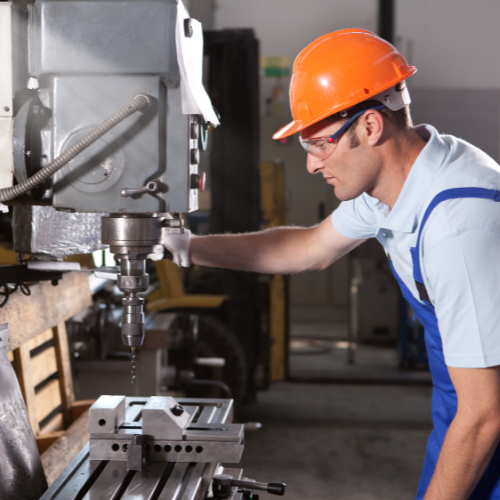
Industrial Ergonomics Services
Industrial Ergonomics Assessment
Industrial ergonomics creates safer, more efficient and more comfortable work environments for employees operating machinery, vehicles and production equipment. It focuses on how people interact with tools and controls, ensuring systems fit the worker. Good ergonomic design prevents strain, fatigue and injury while improving productivity.
At Occupli, our Industrial Ergonomics Assessment looks at how your machinery, vehicles and manual handling tasks align with best practice. Our consultants identify hazards and provide practical, cost-effective solutions to reduce risk and enhance operator comfort and performance.
We offer full ergonomic evaluations including machinery and workstation setup reviews, manual handling assessments, DSE Assessments, and repetitive task analysis. Using our in-house software, we deliver tailored solutions from single assessments to multi-site programmes, with digital tracking, corrective action management and follow-up support.

1. Repetitive Task Analysis
What this covers
Structured assessment of high frequency, low load hand/arm work (assembly, packing, keyboard/mouse, clinical tasks). We quantify exposure to repetition, force, posture and recovery, then prioritise fixes that cut risk without slowing the line.
Typical tools and assessment methods.
- Assessment for Repetitive Task (ART) Tool (rapid triage of upper‑limb repetition risk).
- Occupational Repetitive Actions (OCRA) Index / OCRA Checklist for detailed upper‑limb exposure modelling (incl. multi‑task & rotations).
- Rapid Upper Limb Assessment RULA / Rapid Entire Body Assessment REBA for postural scoring to target redesigns fast.
- Force gauges & Borg Scale CR-10 to validate peak efforts.
2. Lift/lowering - Pushing/pulling activities
What this covers
Manual materials handling across the shift: single & team lifts, carries, and whole body pushing/pulling with/without wheels. We size the task against recommended limits, forces, distances, frequency and floors/gradients.
Assessment Methods
- MAC – manual handling assessment chart, RAPP – risk assessment for pushing and pulling.
- EN ISO 11228‑1 (lifting, lowering, carrying).
- EN ISO 11228‑2 (whole‑body pushing and pulling).
- EN 1005‑2 / EN 1005‑3 (manual handling of machinery parts; recommended force limits for operation)
3. Workstation/Machinery ergonomic evaluations
What these covers
Anthropometrics, reach/clearances, posture, display–control relationships and the physical environment for machine & process workstations (design or retrofit) Suitable for fabrication, pharma, food & bev, logistics, agriculture, labs and healthcare.
4. Ergonomic Design Reviews
What this covers
incorporate ergonomics into your machine, workstation or cell before costly tooling and commissioning. We validate usability, maintainability and operator safety against the relevant EN/ISO standards and map evidence to the EU Machinery Regulations.
What we examine
- People & space: reach envelopes, sightlines, step/stance, access openings (whole body and partial) and service routes. EN 547 1/ 2/ 3 (access dimensions)
- Displays & controls: placement, grouping, coding, actuation loads, error‑tolerance. EN 894‑1/‑2/‑3/‑4 and EN 614‑2 (task–machine interaction).
- Posture & force: operator joint ranges, static holds, and operational push/pull/turn forces. EN 1005‑3 (recommended force limits) and 1005‑4 (postures & movements)
- Work system principles: job design, adjustability, recovery and user variability. EN ISO 6385 and EN ISO 26800 (core ergonomics principles)
- Risk reduction & documentation: risk assessment traceability and instructions for use. EN ISO 12100 (risk assessment/risk reduction)
For more information on what you are responsible for as an employer, please visit the HSA website (click here)
